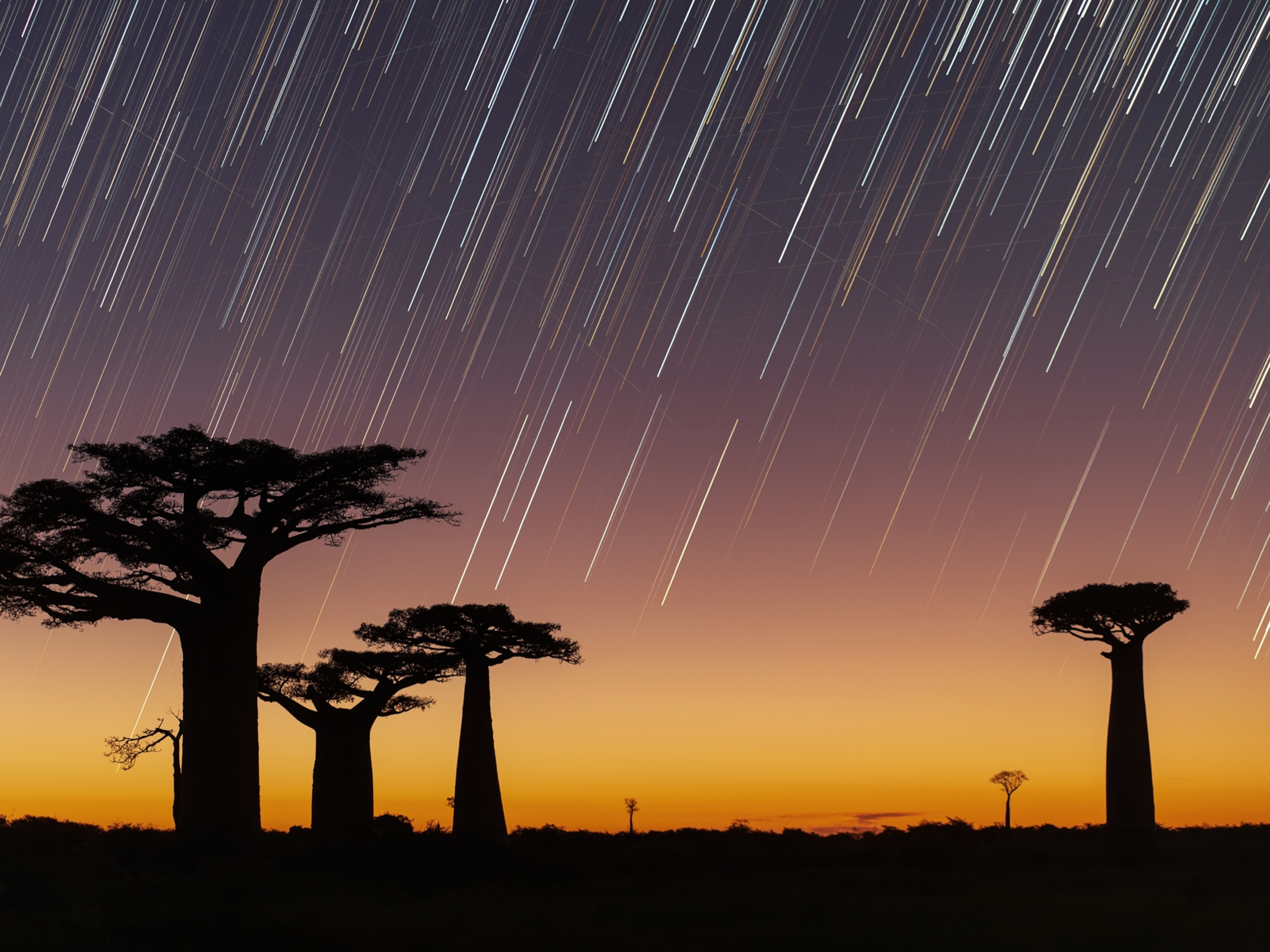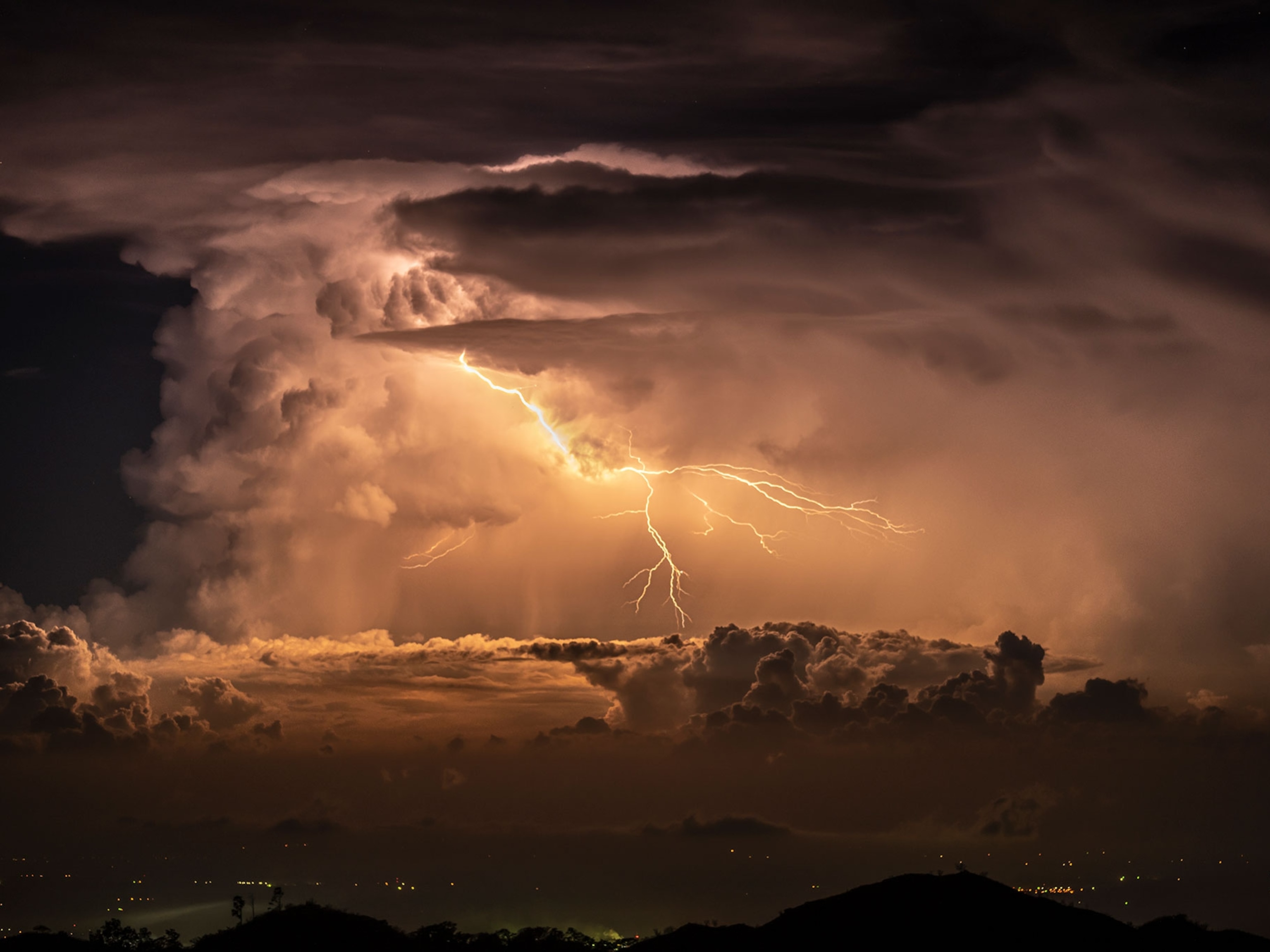
Giant Red Sprite Seen From Space Station
Rarely seen electrical flashes shoot spaceward above storm clouds.
Orbiting above a storm recently, International Space Station astronauts captured a rarely seen type of sky show on camera: a fleeting electrical burst called a red sprite.
And not just any sprite.
The red sprite's exceptional size (in a word, giant), plus the resolution and sense of scale in the picture—distributed by NASA this week—have experts intrigued, despite the fact that red sprites have been seen from space before.
Red sprites are electrical bursts that occur above highly active thunderstorms. They're rarely observed from the ground or space, due to their high altitudes (about 50 miles/80 kilometers above Earth), milliseconds-long durations, and relative dimness, compared with lightning.
But during the filming of a time-lapse video (watch HD version) over Myanmar (Burma) and Malaysia (map) on April 30, NASA astronauts unknowingly captured the rare sight.
"My colleagues and I are really excited about this one," said Steve Cummer, an electrical engineer who studies lightning and sprites at Duke University.
"It conveys the scale of sprites in connection to the size of Earth and thunderstorms better than any picture we've ever seen."
Cummer said he couldn't be certain about this sprite's size, but he guessed it was roughly 6 miles (10 kilometers) wide and 30 miles (50 kilometers) tall.
(Related: "Lightning Sprites, Elves Caught on Camera.")
Mysterious Sparks, Shot Toward Space
The late experimental physicist John Winckler accidentally discovered sprites, while helping to test a new low-light video camera in 1989.
It wasn't until four years later that University of Alaska researchers intentionally photographed another sprite. The presence of nitrogen gas gives the bursts their distinctive red glow, although closer to a thunder cloud they look blue.
"They're sparks created in the upper atmosphere, well above a storm cloud, that follows lightning below the cloud," Cummer said. "The [lightning] charge creates an electric field and, when it's big enough, it drives a spark that propagates upward."
(Related: "Thunderstorms Shoot Antimatter Beams Into Space.")
For as much as scientists have learned about sprites since their freak discovery 23 years ago, much remains hazy about the elusive flashes.
For example, "there's a lot of very interesting chemistry that happens at the tips of sprites that wouldn't otherwise happen," Cummer said.
"What sort of chemistry is happening, and how long does it last? That we don't know yet."
More: "Ball Lightning Mystery Solved? Electrical Phenomenon Created in Lab" >>





